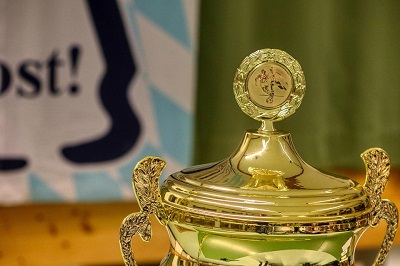Draft Your Team for Cross Country: The Complete How-to Step
Country:
Building a good cross-country team is not an easy job because it requires the development of not only athlete abilities but of strategic planning and in-depth insights into the strengths and weaknesses of those athletes. Whether a coach or athlete, whether a team’s captain or just a face of this sport, drafting your ideal cross country team is exactly where all the difference plays when the season rolls along. This paper is set to take through the drafting of a cross country team, starting from the selection of the appropriate athlete right down to completion to have a well-balanced team of athletes.

Step 1: The Key Qualities for Success in Cross-Country
Country:
The Determinants of success before you may draft your team should always consist of knowing the key qualities
- Endurance: The most important quality for a cross-country runner is endurance. Your team should have athletes who can maintain a strong pace over long distances without burning out.
- Speed: Speed isn’t just about sprinting; it’s about maintaining a high pace throughout the race. Having athletes who can perform well on both flat and hilly terrains is crucial.
- Mental Toughness: For most cross-country races, psychological tests are made compulsory. Runners get pushed to their limits of pain and suffering so they can endure without dropping in races that stretch way beyond a few laps over distances.
- Versatility: Running is the core backbone for cross country, but varied types of races participate where changes in terrain, altitudes, and weather conditions require adaptability. The team succeeds when runners can adjust under diverse circumstances.
- Teamwork: Cross country is a team sport, although it may not seem like it. Your runners need to work together to maximize their performance.
Step 2: Assess Potential Team Members
Country:
Now that you know what traits would make a team win, you can begin evaluating your prospects. Use the criteria below in evaluating them:
- Past Performance: Observe the race history of your athletes, if available. Check for consistency in improvement or good performances in local races. It would be a good starting point to judge their current ability.
- Physical Testing: When possible, testing equipment or measures like VO2 max, and lactate threshold are highly instructive about an athlete’s endurance and overall ability.
- History of Injury: This is the meat of drafting a team. Chronic injuries in the knees, shins, or lower back are an athlete who will struggle with the demands of the sport.
- Work ethic and attitude: Observe how a team trains. Do they have an attitude to improve? Have they got a positive attitude to whatever their team is trying to do? These are intangibles that make the difference between an imiddle-of-the-road or a champion.
- Versatility: Seek athletes who are strong in a variety of conditions. For instance, some runners perform better on hilly or muddy courses while others shine on flat fast courses. A well-balanced team should therefore possess a mix of different strengths that can adapt to varied race conditions.
Step 3: Balancing Your Team

Country:
Once you have identified your top athletes, you must balance your team. Ideally, you will want a mix of top-tier runners and those with strong potential for growth. Here are a few ways to achieve this:
- Top runners: are typically your best finishers in the competitive portion of a race and also lead the pack, for that matter. When one conducts a cross-country meet, usually, the five best finishing times are summed to constitute a team score. End.
- Reliable Scorers: While your top performers will get the attention, you’ll need athletes who can consistently finish in the middle of the pack, securing important points. These runners may not have the fastest times, but they’re dependable and consistent.
- Developing Players: every team needs runners who have the space for growth. Players who, at their actual fitness levels, haven’t yet reached their highest level but are developing, and will contribute in the future.
- Team Chemistry: In cross country sometimes the sum is bigger than the parts. Good teammates who can work well together, support each other, and enjoy a good atmosphere will often make all the difference on race day.
Step 4: Putting the Rest of Your Team Together
Country:
Now that you’ve weighed everything and balanced your team, you should now be able to decide the final picks from how many athletes you are able to field, how many 7 runners there should be (in meets, they count the score with 5), and just how each athlete fits in.
Step 5: Monitoring and Adjusting
Country:
You must monitor the development of the athletes in the season since some develop faster than others while others may get injured or exhausted. You must be flexible enough to adjust the lineup based on the performance of the athletes to maximize the performance of the team.
Frequently Asked Questions:
Country:
1. How do I choose the best cross-country runners?
The best runners have strong endurance, constant race times, and push through discomfort. Observe athletes in practice to notice their pacing, recovery, and mental focus. Their race times, past performances, and overall physical fitness serve as good indicators, too.
2. How can I balance the strengths and weaknesses of my team?
An ideal team would contain a good number of level one and two athletes with varied strengths in speed, endurance, and race conditions adaptability. For cross-country races, a variety of terrains of hills, flats, and mud will require some athletes who are adept at running on each type.
3. Do cross-country runners improve over the season?
Absolutely! With the right training, nutrition, and recovery, cross-country runners can improve dramatically over the course of a season. There needs to be an environment in which athletes are continually challenged and encouraged to focus on incremental improvement.
4. How important is team chemistry in cross country?
Team chemistry is crucial in cross country. Even though the sport in many ways is an individualistic venture, the athletes must rally around each other throughout the season in both training and racing. Team cohesion will help an athlete challenge himself or herself just a little harder and establish an environment that is good for all.
5. What’s the best way to prepare my team for race day?
Mental preparedness is equally important as physical training. Make sure your team visualizes the race where they mentally prepare for the strategy of the race. Proper nutrition and making sure that athletes get enough rest will help them perform to their best when the race begins.
Conclusion:

Country:
Through this, you can draft a cross-country team that is not only competitive but also cohesive and resilient enough to face whatever challenges the season may present.

